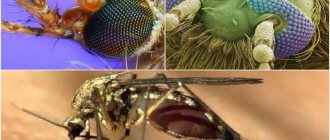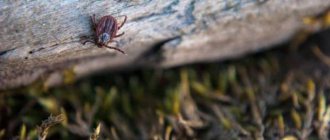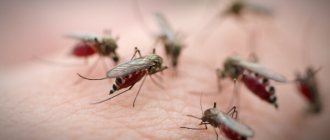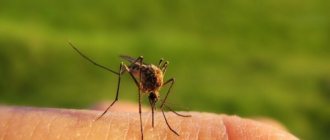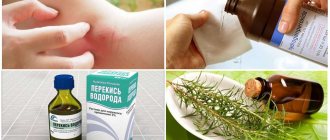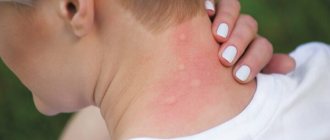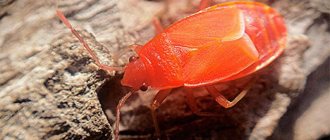How does development happen?
The period of growing up is accompanied by molting and an increase in size. The network contains photographs of the larvae of the squeak mosquito. They resemble small worms or caterpillars, which can have a different structure or color. The abdomen of the bloodsucker includes 10 segments.
To see how the larva of a blood-sucking mosquito develops, it is not necessary to use literature or visit specialized sites. You can find them in containers containing old water in the summer. Small worms concentrate at the top. If you lower a stick or other object into the water, they will go deeper in order to hide. These mosquito larvae and bloodworms have a certain supply of oxygen, so they can stay at the bottom for 10-15 minutes.
The transformation of a bloodworm into a pupa of an ordinary mosquito occurs after a certain period of time. The pupae are similar to tadpoles, but their colors are different. They move quickly and sometimes jump.
Variety of species
There are a number of varieties of such creatures, differing in both appearance, body structure, and behavior. May be mentioned:
- Malaria mosquitoes. They have a large head, large chest, and the abdomen consists of several components. But, unlike other types of mosquitoes, they do not have a breathing tube, but rather have special spiracles located in one of the segments present on the sides. They live on the surface of the water and always try to stay parallel to it. To feed, they catch the smallest organisms with brushes and send them into their own mouth.
Malaria mosquitoes live on the surface of the water - Dergun mosquitoes, also called bells. This species is considered the most common; it is used by fishermen as bait, and aquarium owners feed their pets with such creatures. Bloodworms, as bell larvae are called, are sold in the appropriate stores fresh or frozen, and are constantly in great demand. Bells are bright red in color, and the size of their larvae can reach 3 centimeters. They live at the bottom of reservoirs, where they find food for themselves, but periodically strive to float to the surface for the purpose of breathing. They consume plant remains as food. Immediately after hatching, the larvae are gray, but soon turn red due to their high hemoglobin levels. They also have salivary glands, with the help of which they create a reliable house for themselves from nearby garbage, and it is this that later protects them from enemies.
Long-legged mosquitoes lay larvae in swampy areas - Stinging mosquitoes that live near the forest. They have special tufts of hair located at the base of the body.
- Centipedes, the larvae of which usually appear in wetlands. Their development takes place in a swamp environment, and in appearance they resemble ordinary worms of a gray-brown hue. The centipedes have a large head, and at the end of the body there is a star-shaped mouth opening.
- Pedicius. This species is characterized by so-called false legs, with the help of which they move along the bottom of the reservoir. There can be up to 10 such legs. These creatures are able to survive in extremely polluted water due to the presence of gill appendages.
- Biter, which is one of the most numerous species of the mosquito population. Initially, this species lived only in the African region, but now they can often be found in any country, and they also act as carriers of dangerous diseases such as dengue or yellow fever.
Features of development
- The female lays eggs. When determining how many eggs a female will lay, it is necessary to take into account species characteristics. For example, the squeak lays a lot of eggs, from which larvae are born.
- It takes 2-8 days for the egg to fully mature. It all depends on the conditions in which the insect lives.
- After 2-8 days, larvae appear and inhale oxygen through appropriate tubes. During the period of growing up, 3-4 molts occur.
- After a certain period of time, a pupa appears and develops within 4-5 days. The hue of the pupa changes from light to black.
- Another stage is the imago (adult). She gets out to the ground.
Why you need to kill mosquito larvae
It is a well-known fact that unwanted neighbors such as mosquitoes can poison your summer evenings; these insects are carriers of a number of infectious diseases.
First of all, you should be wary of mosquitoes if your home is located near bodies of water where they usually breed. But sometimes mosquitoes can settle directly in residential buildings and become a real curse.
Dangerous mosquito larvae
Return to content Throwing all their strength into fighting mosquitoes, many never achieve results; more and more vampires continue to attack them.
If the number of insects is significant, it is important to fight all stages of their development, that is, in addition to adults, eggs and larvae, otherwise new individuals will hatch all the time and it will never be possible to get rid of them completely. There are many means to combat mosquitoes, the main thing is to choose and use them correctly.
Peculiarities of mosquito breeding
Return to contents Mosquitoes choose swampy lowlands to breed in nature. Females lay eggs in shallow water, after some time the larvae hatch, which continue to live at the surface of the water, clinging to the surface film and collecting nutrients with special bristles.
In large bodies of water where fish are found, mosquitoes do not reproduce, since the fish completely eat the larvae. Having accumulated a sufficient amount of nutrients, the larva turns into a pupa.
This form is slightly vulnerable, since it does not feed or move; it is very difficult to influence the pupal phase, therefore it is advisable to prevent the moment of transformation of the larva into a pupa.
When female mosquitoes emerge from the pupa, they almost immediately go in search of fresh blood. A large number of adults appear simultaneously. The transformation of a larva into an adult takes about a month. Thus, 4-8 generations manage to grow safely during the season.
It is clear that fighting such a horde is not an easy task. If your dacha has a decorative pond or containers for long-term water storage, they can serve as a habitat for larvae. Important! Mosquitoes can breed indoors if there is constant humidity or if there is a sewer leak in the basement. If you know the breeding habits of mosquitoes and direct your efforts accordingly, the fight against them will be more effective.
Basic methods of struggle
For the simultaneous mass destruction of mosquitoes, it is best to act on their larvae. This way the fight against insects will have more effect. Attention! The most ancient and reliable method - draining small bodies of water, that is, destroying breeding sites, is used in wetlands on a global scale, especially when mass reproduction of mosquitoes leads to the spread of infectious diseases, but in small households this is not always possible. Most often, special substances are used that are poured into the water and destroy the larvae. Another common method is to combat the use of oily substances that form a film on the surface of the water and block the access of oxygen.
Grandfather's remedy - kerosene
Kerosene has been used to kill mosquito larvae for quite some time. There is an opinion that in this situation, the best kerosene will be the lowest quality (that is, heavy).
The principle of operation, as already mentioned, is to stop the access of oxygen to the growing larvae, as a result of which they die. The method is suitable for small ponds, grooves along the banks of reservoirs, and puddles. How to treat mosquito nests? Advice! It is best to use a sprayer, but for a small area of water a watering can is suitable; you can simply fill the puddle from a cup. If the kerosene is very heavy, it may immediately sink, but after a while it floats up and is evenly distributed over the surface. Average consumption is 50 grams per 2 square meters. The kerosene layer lasts for about 10 days, but even after the film disappears, the persistent smell remains for a long time.
To make the film on the water last even longer, machine oil can be added to kerosene, which slows down evaporation.
The negative aspects of using kerosene include a specific smell; if there is vegetation or other inhabitants in the reservoir, they will also be irreparably harmed. It is possible to use other oily substances using the same mechanism.
Chemicals
The chemical industry today offers a range of insecticides that can kill larvae in water. Such products can only be used in bodies of water, the water from which is not used for drinking and is in no way connected with drinking sources.
Typically, such drugs are sold in powder form and diluted to a certain concentration. They are applied to the surface of the water using a sprayer for even distribution; you can simply pour the solution into small containers.
Insecticides are also used to treat damp basements, places under stones, foundation cracks and other mosquito habitats.
With this kind of product, it is important to be very careful and follow the dosage and precautions indicated on the packaging.
Biological control methods
Under natural conditions, mosquitoes have many enemies: fish, waterfowl, dragonflies, and frogs. While frogs eat adults, fish feed on larvae.
Therefore, if mosquitoes have infested your home pond, try to keep at least a small amount of fish in it, and make sure that there are frogs in the pond. Also, make sure that the water in your pond does not stagnate, this will also prevent mosquitoes from breeding.
Preparations have been developed that contain bacteria that can neutralize mosquito larvae without harming other inhabitants of the reservoir. Basically, these are imported means of production.
The principle of operation is as follows: bacterial spores, which are in a sealed package in an inactive state, are activated when they enter a humid environment. Important! Since bacteria are the natural food of mosquito larvae, the latter eat them, after which intestinal dysfunction develops, leading to the death of the larvae. This drug does not affect adult insects, so it should only be used in combination with other means of destruction.
Draining a summer cottage
There is an opinion that draining swamps is an exclusively negative phenomenon. However, your small plot is unlikely to change the ecological situation significantly, and the wetland will cause you great discomfort and will not bring any benefit.
A properly designed drainage system will help you get rid of the problem of dampness in your area for a long time. Depending on the cause of waterlogging, two types of drainage systems are distinguished:
- surface (to remove sediments accumulating on the surface);
- deep (with high groundwater levels).
Get rid of dampness in the basement
As already mentioned, mosquitoes can breed in constantly damp basements of houses. If you don’t kill the larvae in time and don’t get rid of the future brood, you will soon be attacked by a large army of bloodsuckers.
They often enter the room directly from the basement through vents. First of all, it is necessary to remove all kinds of rotting products, all stale garbage.
There can be many reasons for dampness in the basement:
- close-lying groundwater and poor drainage system;
- faulty sewerage system;
- leak in the foundation;
- poor thermal insulation.
If the drainage system in your home is initially poorly designed, it is unlikely that you will be able to get rid of dampness; other causes can be eliminated.
If there is a visible reason (sewage leak), eliminate it. To dry the floor, use one of the following options:
- cover the floor in the basement with plastic film in two layers, cover it with a layer of clay about 5 cm, compact the clay thoroughly;
- cover the floor with a 10 cm layer of gravel or sand;
- lay the boards on the concrete floor, and lay sheets of roofing felt on it (you will get a double floor).
Both before and after the proposed measures, it is advisable to treat the basement with insecticides designed to destroy insect larvae.
Where do they live?
The female mosquito carefully selects a place for subsequent egg laying. To determine where blood-sucking mosquitoes lay their eggs, the habitat is studied. Particular attention is paid to the following factors:
- Are nutritional ingredients available?
- Temperature of standing water in the tank.
- Degree of illumination.
In order for the bloodworm to appear and develop, females choose containers and reservoirs in which the water is stagnant. The liquid must contain microorganisms and shelters. Acceptable temperature conditions are maintained at 25-35 degrees. Reservoirs that are large in size are not used for laying, as there are predators and other dangers here. Therefore, such places are not checked to find out where mosquito larvae live.
Although blood-sucking pests do not have any special requirements for places of existence, they never live in water that is excessively polluted. For laying, places that are filled with petroleum products are not chosen, since they have a detrimental effect on the speed of development. Bloodworms and adult insects cannot breathe normally through the film present on the surface. The only exception is species that use dissolved oxygen.
Blood-sucking insects also differ in their respiratory system. Some species go outside to get the required portion of oxygen, others just need the air in the water. By the way, almost all species overwinter at the larval stage in a container or reservoir where the water does not freeze. Some varieties have a preference for soil or aquatic environments.
What does a mosquito larva look like and develop?
The mosquito larva is the second stage of insect development after the egg. This is an important period in the life of a bloodsucker because nutrients are accumulated for adult individuals. Despite their small size, they play an important role in nature.
Appearance of the larva and structure
When answering the question of what a mosquito larva looks like, we can describe a small worm, the body length of which usually does not exceed 1 cm.
But there are also some differences that are clearly visible upon careful examination: their thoracic region is expanded in relation to the articulated abdomen, and on the large head there are 2 black eyes. The color of the larvae depends on the type of mosquito. In the well-known squeaker they are brown, while in the malarial one they are green.
At the end of the larval body there is a long process, obliquely located in relation to the abdomen. This is a breathing tube, at the end of which there are 2 tiny holes: through them vital oxygen enters the body.
If you approach a body of water where mosquito larvae live and sweep your hand sharply over the surface of the water, they will abruptly take off and rush deeper into the water to hide from potential danger.
To do this, they are helped by so-called swimming hairs. They are collected in bunches and attached to the body of the worm. The largest of them is located on the tail segment, playing the role of a kind of motor and rudder, setting the pace of swimming and the direction of movement in the water.
The entire life of a mosquito in the larval stage lasts on average 3–4 weeks. Its exact duration depends not only on the species, but also on environmental conditions, primarily water temperature.
During this time, intermediate molts occur: the insect sheds its body cover - the exoskeleton - so that it can increase in size. Important! Mosquito larvae are characterized by intensive growth: when they first hatch from the egg, their length does not exceed only 1 mm and they are almost invisible to the naked eye. By the end of the stage, the body stretches up to 1 cm. Body weight increases even faster: according to biologists, its difference from the original can be up to 500 times. When the development of the larva ends, it transforms into a pupa with a more complex structure.
How is her life going?
All species of mosquitoes, of which there are about 3,500, have larvae that live in the water where the female lays her eggs. To give birth to offspring, she can choose:
- a fresh body of water, most often calm and with standing water; small size and depth up to 1.5 m;
- gutters;
- puddles that do not dry up for a long time;
- pits filled with water;
- barrels and tubs.
The structure of larvae of different species can differ significantly, and this determines the characteristics of their behavior. But for the majority, due to the presence of a breathing tube on the tail, there is a need to be in a position upside down at the surface of the water. Attention! This is how they expose holes to obtain oxygen. Only approaching danger can force them to go deeper into their native reservoir, but in a maximum of 15 minutes the worms will again hang near the surface. But there are also mosquito larvae that live at the bottom of reservoirs - for example, the bell mosquito. The life of the malaria mosquito larva is also interesting. She, unlike her brothers, does not have a breathing tube at the end of her belly, but has holes located along the edge of her body.
The necessary conditions
Species of mosquitoes differ greatly from each other: some prefer the hot and humid climate of the tropics, while others feel good near the Arctic Circle.
For the development of their larvae, some choose reservoirs that are well heated by direct rays of the sun, while others look for shady ponds.
In general, scientists call the permissible temperature for development a range of 10–35 °C, but the optimal ranges from 25 to 30 °C: in such conditions growth occurs faster.
What danger awaits the larvae?
Observations have shown that most of the larvae die, and only some of them manage to turn into pupa. The cause of death can be bad weather conditions (for example, low water temperature or natural disasters). Advice! But such losses are more than compensated by the high fertility of these blood-sucking insects, so there is no need to talk about a decrease in their population. Often these small worms end up being eaten: mosquito larvae are the main food for other inhabitants of the reservoir: fish and amphibians. They are in no way protected against these enemies.
Another threat lies in the unfavorable environmental situation. If a reservoir is polluted with petroleum products, a thin film forms on the surface of the water.
It blocks the larvae's access to air, without which they die after 15 minutes, and also clogs the holes in the breathing tube.
Nutrition
What do mosquito larvae themselves eat? Their diet includes microscopic organisms such as single-celled algae, as well as organic plant debris that decomposes in water.
To find suitable food, the larva filters the water. On average, its volume in 24 hours is 1 liter, which is an impressive figure for such a small creature.
What do they eat
Blood-sucking insects eat a variety of substances and components that they can process. Most often, the larva eats microorganisms concentrated in water. Since the individual lives in stagnant water, there are no problems with nutrition. Blood-sucking insects feed on plants in the water and rotting particles. They enter the body during fluid pumping. Some motels feed on the larvae of other mosquito species. Scientists have more accurate information about what a young individual eats as it goes through the molting stage.
Who are bloodworms?
A separate category includes bloodworms, which are called bells, chironomids or dolguns. Another name is the squeak mosquito, which in its larval stage looks like a worm. Their squad is located near the bottom of a container or a reservoir with standing water.
Within 1.5-2 weeks, the size of the bloodworm increases significantly (up to 16 mm). Those bloodworms that live on the lake bottom consume microorganisms, as well as silt deposits. In order for oxygen to enter the body, blood-sucking insects use gill filaments. Some of the oxygen also enters through the body of the pest. These bloodworms have a deep red hue. This is because there is a huge amount of hemoglobin in the body. Since the body is saturated with iron, bloodworms also endure prolonged oxygen deficiency.
Malaria mosquito larva
They have several characteristic features. The main feature is the absence of a breathing tube. To carry out gas exchange, the malarial species attaches to the surface of the water. To do this, he uses bristles concentrated on the front of his abdomen. With the help of these bristles, the insect assumes a horizontal position. Therefore, fishermen see malaria mosquitoes quite often. The size of bloodworms and adults is affected by the temperature level and habitat.
Role in biocenosis
Bloodworms occupy a significant place in the biocenosis. Many reptiles, fish, as well as birds and other insects feed on them. Experienced aquarists are interested in this product. To do this, they visit specialized and zoological stores. Small insects and bloodworms are consumed by hedgehogs, small crustaceans, seagulls and toads. Scientists have identified a certain type of fish (gambuzi). This phenotype feeds on bloodworms of various blood-sucking species. They eat other food if there are no larvae available. Aquarists use this information to adjust population sizes.
Blood-sucking insects in the house
Squeaker and other species are born and develop in water. This is why mosquitoes do not like drought and also do not tolerate lack of moisture. This feature can be used if it is necessary to remove bloodworms and adults from an apartment or house. To poison mosquito larvae, you can use chemical insecticides and drugs, as well as folk remedies, from which they die. To purchase them, you need to contact specialized stores. Since the drugs come with detailed instructions, there will be no problems with removal. All a person needs to do is study the features and do everything correctly.
Benefits and harms
Not only is the development of mosquito larvae of significant interest to researchers in this field, but these creatures also perform water filtration in fresh water bodies. They act as fish food and are used for successful fishing. Their presence determines how clean the reservoir is, because if there is significant pollution, the larvae inevitably die.
The only real pests can be considered centipede larvae , whose eating habits cause unambiguous harm to crops; these creatures gnaw seedlings and roots. Overall, mosquito larvae are a worthy subject for study, and their usefulness in nature for many reasons is also beyond doubt.

